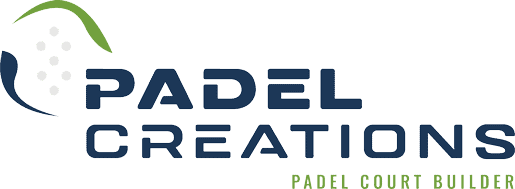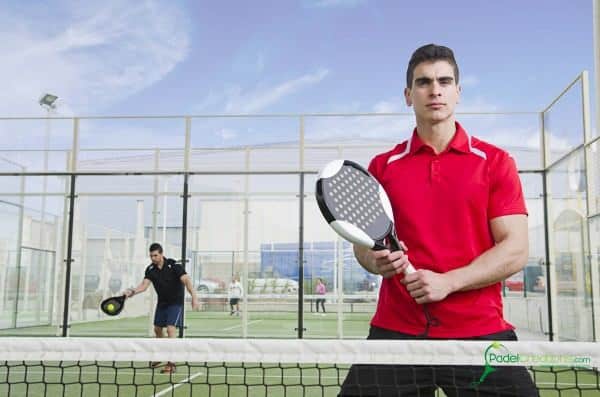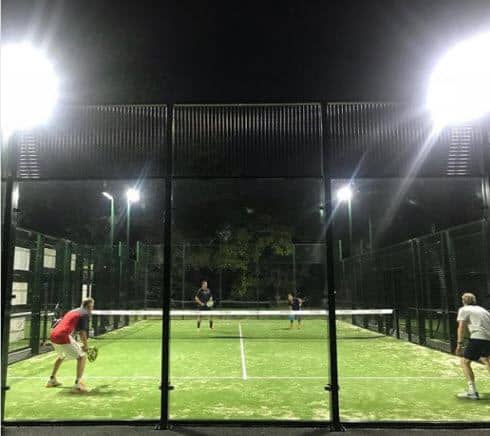
Please note that on the foundation ONLY Padel is being played and no skyscraper is to be built. Accordingly, the highest load-bearing capacity has to be considered only at the edge for anchoring the steel structure of the Padel Court. In the playing area of 20 x 10 m the carrying load is comparable with a terrace.
When planning outdoor padel systems, it is important to take the local conditions into account and to ensure a suitable substructure.
The building habits of the contractor or building company are also to be considered. As a rule, their systems and materials are less expensive than other systems from other parts of the country or countries. Important is the fulfillment of the important specifications of the foundation so that it fits later to the construction of our Padel Courts system in order to guarantee the best safety and stability.
The important specifications are:
1. Measurements and light points. We deliver the right measurements with the offer.
2. Reinforced concrete strip foundation for max. stability in anchoring the steel structure. Strip width: approx. 40 – 50 cm, Depth: 50 – 80 cm *
3. Playing area 20 x 10 m: permeable to water or with a slope of around 0,7 %
4. Surface: it can be a bit rough, but with no cracks or bumps that can cause an unusual ball drop. The players would not like that.
(*) In cold countries strip foundations must be frost-free. If it comes to frost, the water expands. It has so much power that it can lift the foundation at points. This will damage the foundation itself, allowing water to penetrate. This water in the foundation now causes the damage by bursting from the inside. The damage progresses more and more, if the foundation has not been laid correctly.
For a foundation to be frost-free, it must be laid out at a depth where frost can no longer be expected. As an example: In Germany this depth is on average between 0.80 and 1.50 m. How deep it finally freezes depends on the local conditions. In a little sunny alpine valley it freezes faster than in the mild west of Germany under the influence of the Atlantic climate. For most regions, a depth of 80 cm is sufficient to make the foundation frost-free.
Under the foundation a drainage layer
Nevertheless, another precautionary measure is usually taken. So under the actual foundation still a drainage or drying layer is applied. This consists of gravel (usually 16/32 grain), so that water can flow better and when freezes without causing damage.
In warm countries with very mild winters the most cost-efficient option is the single slab with slope. Also described in the following post. (see HERE)
The conversation with the contractor
When discussing with the contractor, first to determine whether the contractor can make a strip foundation with a water-permeable surface with a suitable discharge coefficient for your area. The runoff coefficient is primarily intended to maintain the operation of the game as well as the long-term assurance of the quality of the playing surface. It is important that the rainwater runs off and does not remain on the surface.
The playing surface should be hard and stay that way over time. Be aware that on the surface we roll our synthetic turf and then on the total area of 200 m2 a total of 3 tons of silica sand will be spreaded. The artificial grass will not be glued.
As a binder for the grain mixture is bitumen or concrete and then there are the following 2 solutions:
Tarmac with drainage features
(also called “water-permeable asphalt”)
Asphalt is used in sports field construction as a drainage layer, on which the wear layers are arranged. Such types of asphalt are so openly assembled that penetrating surface water can be immediately transferred to the underlying layers. The dripping asphalt is rolled.
Asphalt top coat: approx. 5 – 10 cm (*)
Grain mix: approx. 2 – 16 mm (*)
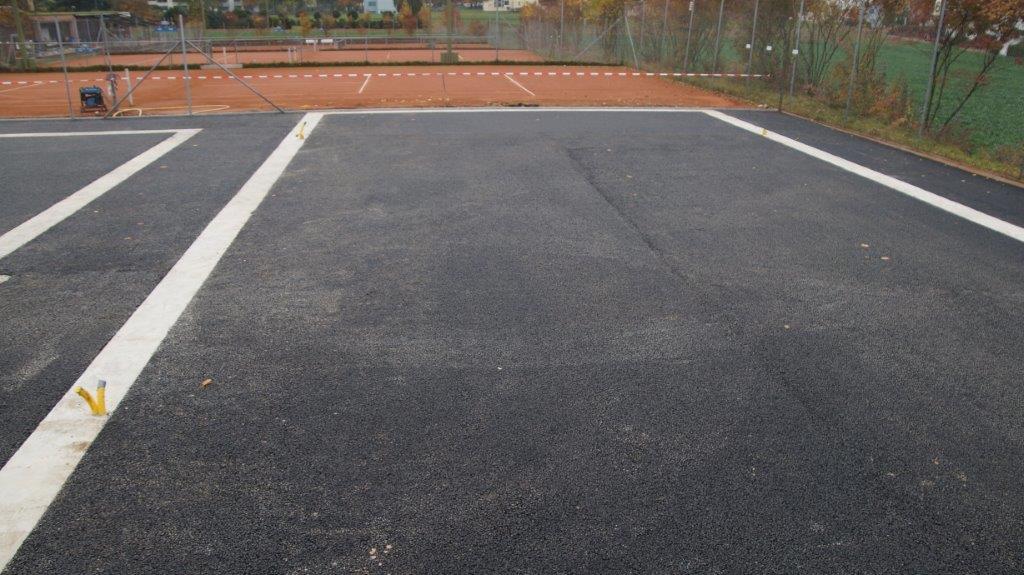
Drain Concrete
(also called “water-permeable concrete”)
This is concrete that is manufactured specifically with a void content of at least 15% and is thus permeable to water. Since this surface is not rolled, it should be noted that the protruding stones are smashed before construction with a hammer or the like. Thus, you prevent the artificial turf from being damaged.
Cover layer: approx. 14 – 16 cm (*)
Grain mix: approx. 6 – 8 mm (*) The smaller the smoother will be the surface.
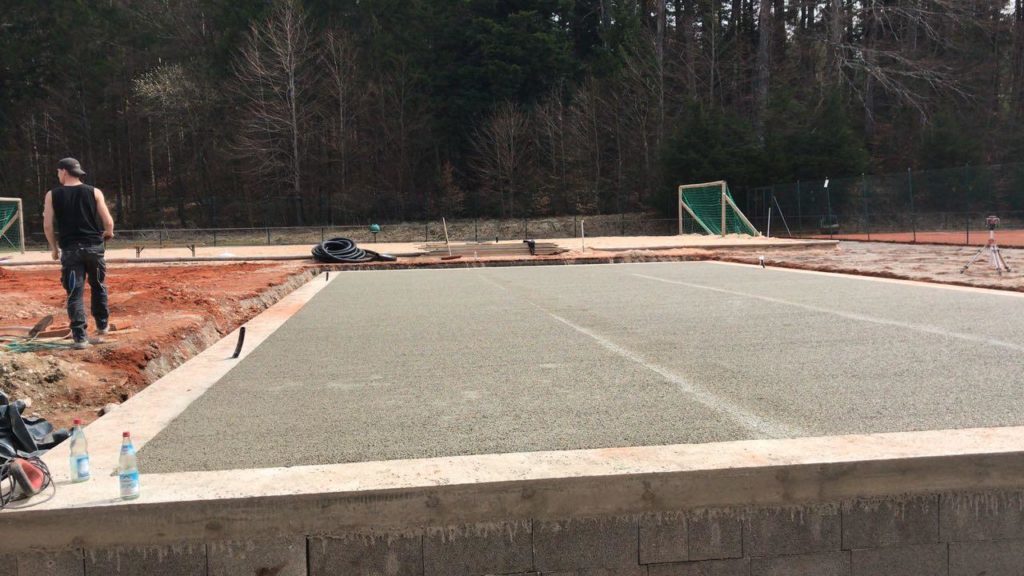
If NO water-permeable surface can be created
Strip foundation with base slab
If a water-permeable surface can not be created then a strip foundation with concrete slab with a slope of approx. 0.7 – 1.0% on the 11m side for the rainwater must be considered.
A reinforced concrete floor slab with expansion joints every 2 x 2 meters. To reinforce the bottom plate is a wire mesh of 20 x 20 x 5 mm.
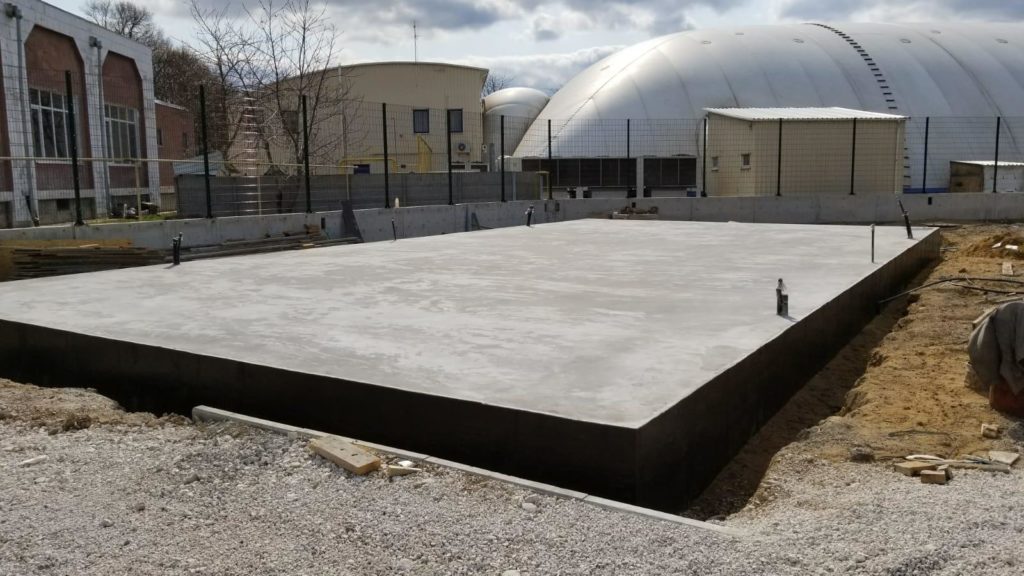
Always cast the strip foundation and base plate separately
The question of whether both parts could be concreted at the same time seems quite plausible. Unfortunately, both parts should be concreted independently. First the strip foundations and then the bottom slab. In addition, the slab can only be concreted when the concrete of the strip foundations has cured according to the regulations.
The problem is that the slab is also very heavy. If the strip foundation and slab were to be concreted at the same time, the likelihood would be high that the concrete of the sñab would literally push or push apart the concrete of the strip foundation. That in turn would significantly degrade the structural strength.
Massive concrete floor slab in 20 cm thickness with antifreeze substructure
This solution is intended for warmer regions. However, the highest load comes about on the edge, namely where the steel structure is anchored. For this reason, the solution with the strip foundation is usually preferred.
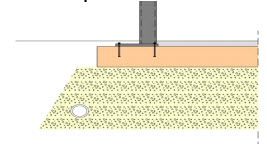
(*) The information is given without guarantee and merely serves as guidelines to simplify the conversation with the contractor. Let your contractor advise you so that he can work out the best and most favorable solution for you based on local conditions and regulations. Gardeners often make strip foundations for their garden sheds, and could also help.
For further questions please do not hesitate to contact us.
